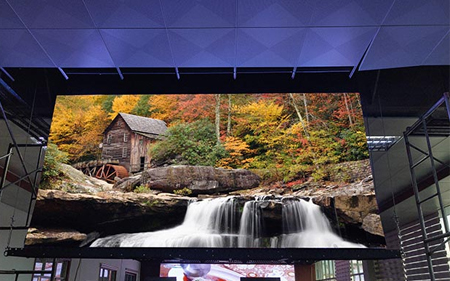In today's rapidly evolving internet landscape and the implementation of smart city initiatives, the market penetration of flexible scrolling LED display screens continues to rise. These screens are widely utilized in various settings such as indoor and outdoor advertising, shopping malls, sports venues, and entertainment venues. However, with the increasing strain on electrical resources and the growing environmental consciousness, reducing the power consumption of flexible scrolling LED display screens has become a focal point for the industry. Below, ONUMEN will introduce ways to reduce the power consumption of flexible scrolling LED display screens.

Methods to reduce the power consumption of flexible scrolling LED display screens:
By optimizing the brightness of flexible scrolling LED display screens, reducing the refresh rate, and conserving displayed content, it is possible to effectively reduce power consumption, making it one of the effective means to decrease the power consumption of flexible scrolling LED display screens.
Optimizing the brightness of flexible scrolling LED display screens. The brightness should be adjusted according to the actual usage environment and distance to simultaneously meet visual effects and energy-saving requirements.
Lowering the refresh rate of flexible scrolling LED display screens. Properly controlling the refresh rate can reduce the power consumption of flexible scrolling LED display screens without affecting image clarity.
Conserving displayed content on flexible scrolling LED display screens. Excessive static content can lead to excessive power consumption of the entire flexible scrolling LED display screen. Therefore, arranging displayed content reasonably and reducing unnecessary power consumption is crucial.
Proper usage of flexible scrolling LED display screens can reduce unnecessary power consumption and losses.
Properly installing flexible scrolling LED display screens and ensuring that they are installed at suitable angles and positions. When selecting flexible scrolling LED display screens, choose suitable models and sizes according to actual needs and environmental conditions to avoid excessive power consumption and poor effects.
Regularly maintaining and cleaning flexible scrolling LED display screens to maintain their normal operation and lighting effects. At the same time, pay attention to reasonable adjustment of brightness and displayed content during usage to avoid excessive power consumption and resource consumption.
Currently, many energy-saving technologies tailored for flexible scrolling LED display screens have emerged.
Developing energy-saving modules to reduce LED power consumption and extend the lifespan of flexible scrolling LED display screens.
The application of some energy-saving devices can effectively reduce the power consumption of flexible scrolling LED display screens. For example, using energy-saving drive technology, intelligent dimming technology, etc., can reduce power consumption while ensuring display effects.
In summary, these are the methods to reduce the power consumption of flexible scrolling LED display screens. Through proper control and management, we can effectively reduce the power consumption of flexible scrolling LED display screens, reduce operating costs, and achieve sustainable development and energy conservation goals.